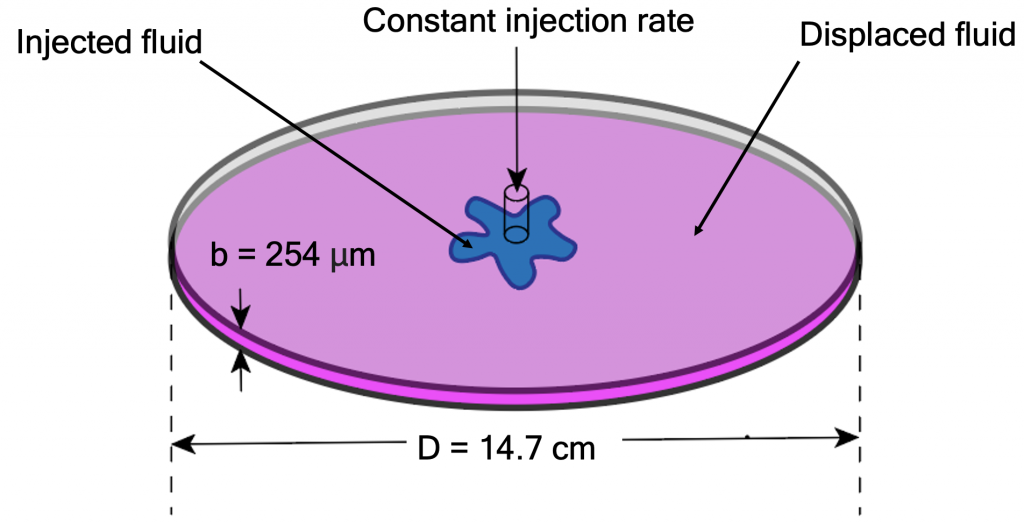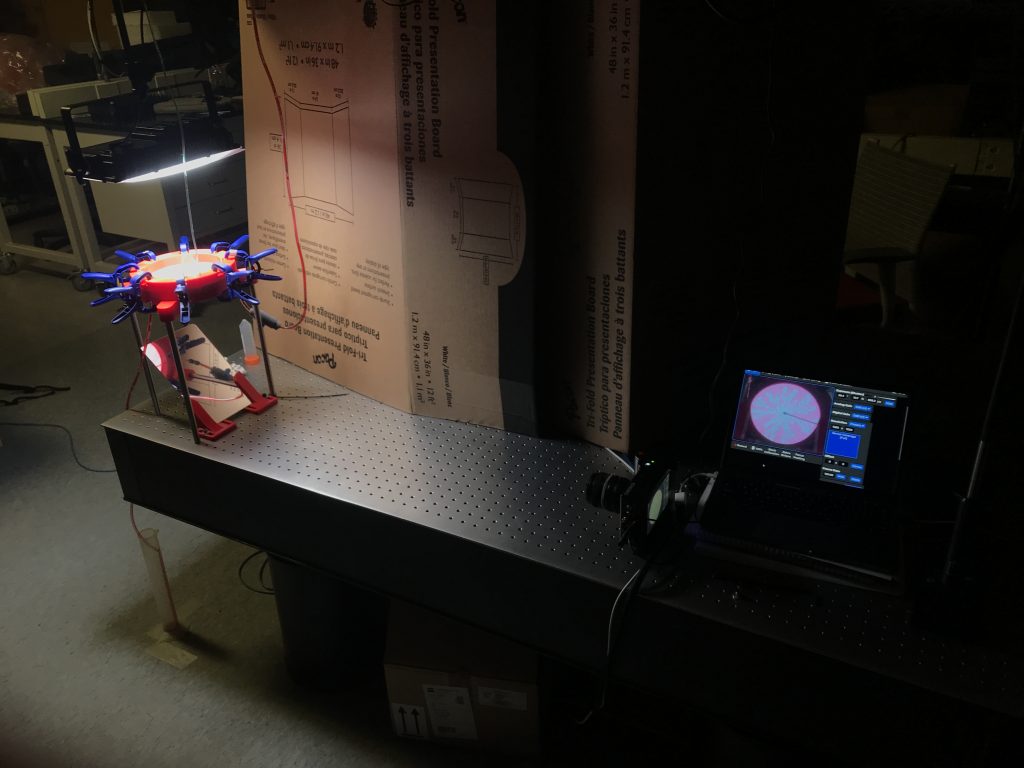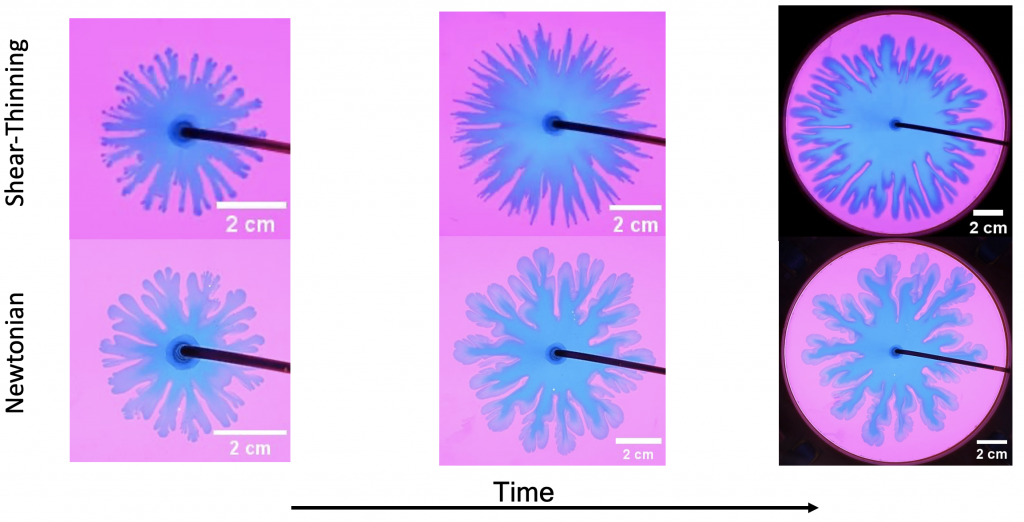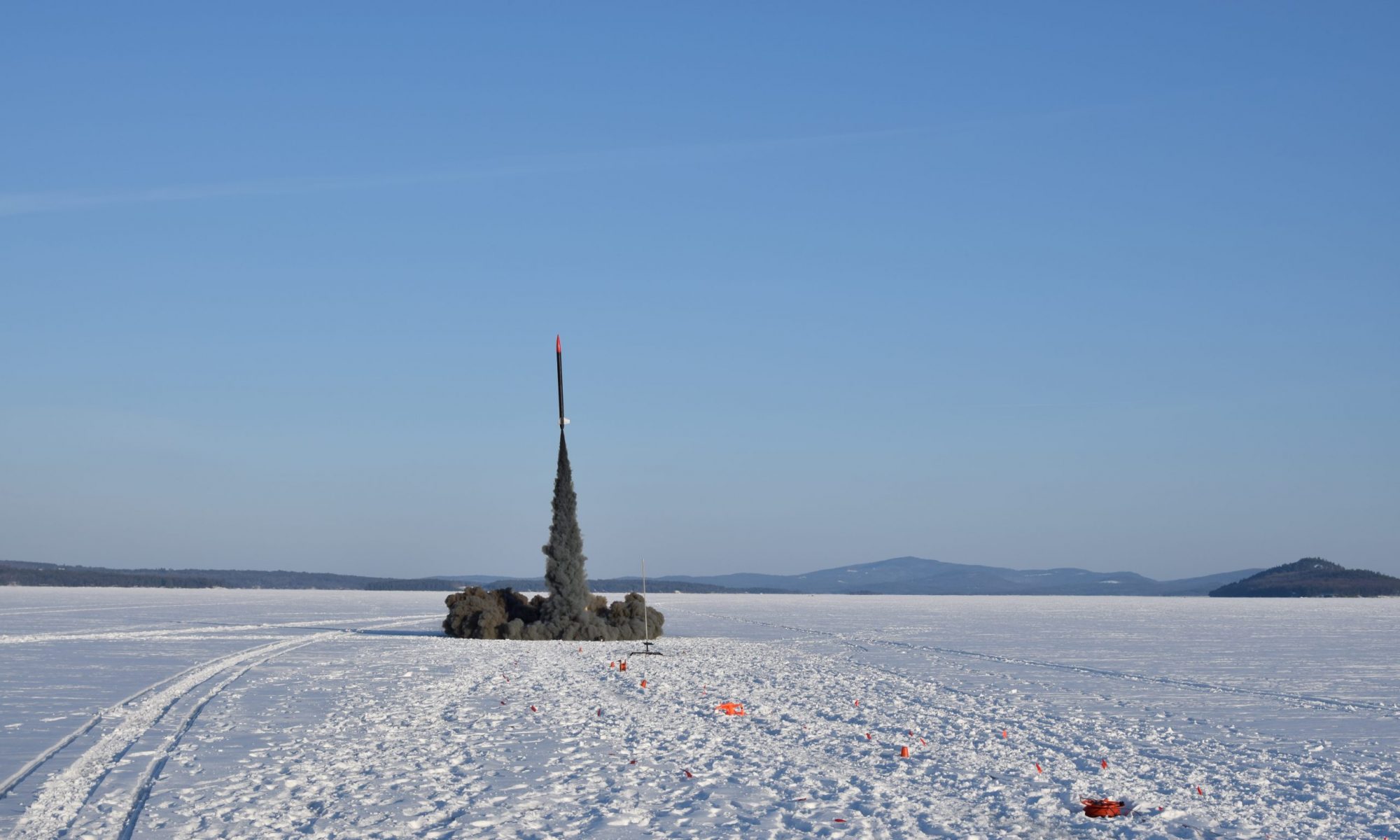The interaction of two fluids in a porous medium is dependent on their viscosities and the pressure gradient applied, as well as other secondary factors including surface tension. If a more viscous fluid (like oil) is injected into a less viscous liquid (like water), the oil will displace the water and spread uniformly in all directions. But if a less viscous fluid is injected into a more viscous fluid, the interface between the fluids will become unstable. Long fingers of the less viscous fluid will grow out into the more viscous fluid, creating a pattern resembling a snowflake or a starfish. This so-called “fingering instability” is the subject of my research in Professor Tang’s Multiphase Transport Lab at Northeastern. There are many factors that control how the fingers grow as the less viscous fluid is injected, and understanding these factors may allow us to suppress or facilitate the instability depending on the application. In the future, a clear understanding of fingering instability may be useful in mitigating chemical spills underground or sequestering carbon dioxide in porous rock.
To generate fingering instability in a controlled and repeatable manner in the lab, I had to construct a Hele-Shaw cell. A Hele-Shaw cell consists of two parallel glass plates separated by a narrow gap. A sufficiently narrow gap allows for the following assumptions:
- The pressure gradient and velocity perpendicular to the plane of the cell are zero everywhere
- Inertial effects are negligible. The velocity is aligned with the pressure gradient everywhere.
Application of these assumptions to the Navier-Stokes equations reveals that the average velocity of the flow is described by Darcy’s law:
![]()
Since Darcy’s law also predicts flow in a porous medium, a Hele-Shaw cell can be used to understand flow in soil, porous rocks, and many other common substances.

Since nobody in the lab had ever worked on porous media flows before, I had to start from scratch. Based on some advice from Dr. Bischofberger’s lab at MIT, I began with the following requirements:
- There must be a means of injecting fluid into the center of the cell
- There must be an independent means of removing fluid from the center of the cell.
- The cell should be easily disassembled for cleaning
I built an initial prototype using acrylic plates clamped together with screws. One syringe pump injected fluid in the top of the cell and another removed fluid from the bottom to provide the ability to extract air bubbles and establish a clean initial condition. It provided basic functionality, but cleaning time was too great and the acrylic plates were too flexible.

To address the issues with the first prototype, I built a second iteration (shown below) where two glass plates were clamped together for easy disassembly. The second iteration also included an angled mirror, uniform lighting, and a rigidly mounted DSLR camera for reliable data collection. We are satisfied with the performance of the current apparatus.


We are currently using this apparatus to study a new phenomenon we have observed in the case of a shear-thinning displaced fluid. In contrast to the case of a Newtonian fluid where finger growth and branching progresses steadily over the course of an experiment, certain shear thinning cases exhibit three distinct morphologies over time. We expect to publish the details of these observations later this year.


